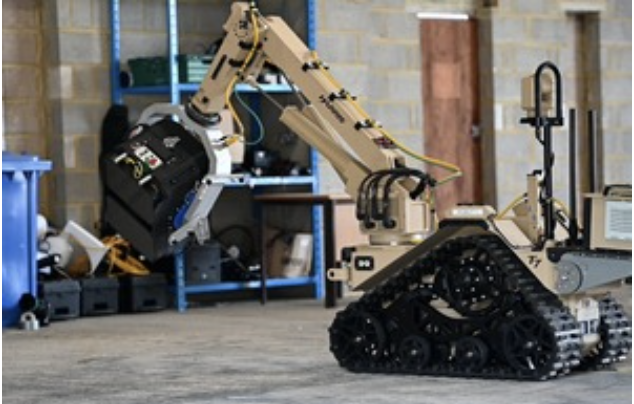A cutting-edge X-ray robot equipped with X-ray backscatter technology promises to enhance military safety by detecting concealed weapons and explosives from a safe distance
A groundbreaking X-ray robot equipped with X-ray backscatter (XRBS) imaging technology has moved closer to revolutionising battlefield safety. Developed by the Defence Science and Technology Laboratory (Dstl), this innovative prototype could save lives by enabling military personnel to detect hidden weapons and explosives.
Revolutionary X-Ray robot for battlefield safety
The X-ray robot is mounted on a remote-controlled L3Harris T7 robot, allowing operators to remotely inspect containers, cars, and walls for potential threats without endangering themselves.
This remote capability enhances situational awareness, enabling quicker and safer scans of large areas, ultimately giving troops a significant operational advantage.

Novel approach to explosive ordnance disposal (EOD)
According to Trial Manager Elaine, applying X-ray backscatter to explosive ordnance disposal (EOD) is a novel approach. This technology allows the robot to assess the presence of threat items without human proximity, significantly reducing the risk to military personnel and potentially saving lives.
Two prototypes have been developed and successfully field-tested in collaboration with the US government. These trials have provided valuable feedback to refine the prototype, making it a deployable military asset for use on the battlefield.
Real-time detection and positive stakeholder feedback
The X-ray robot’s imager head, is mounted on the robot arm, operated via a haptic controller. It utilises a small ‘pencil beam’ of X-rays to scan targets and transmits real-time images to operators for analysis. Stakeholders have reacted positively to the system’s capabilities, expressing strong interest and enthusiasm for its potential deployment.
In summary, the X-ray robot with X-ray backscatter technology significantly advances battlefield safety, offering remote threat detection and increased situational awareness. Its successful field tests and positive stakeholder feedback indicate its potential to revolutionise military operations and save lives on the battlefield.










